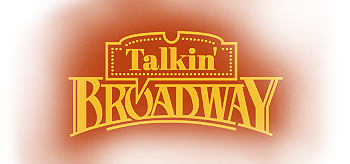|
by Laura Frankos Immigrants in Musicals, Part One: The Early Years, 1870-1910 According to playwright Israel Zangwill, America is the "great melting pot," where newcomers from different nations are forged into a new whole. Many of those immigrants played a pivotal role in the history of the musical: Broadway legends Harrigan and Hart, Weber and Fields, George M. Cohan, the Shuberts, Irving Berlin, Eddie Cantor, the Gershwins, Joseph Urban, Victor Herbert, Al Jolson and Sigmund Romberg—to name a few—all were immigrants or first-generation Americans. And, of course, their fellow immigrants helped fill the houses for their shows, especially in the late nineteenth and early twentieth centuries, the peak years of immigration. So it's not surprising that musicals have often featured immigrants as characters, first in a contemporary setting, then to reflect earlier historical eras. This column will look at some of those shows from 1870 to 1910. Harrigan, Hart and Braham: Tales of the Bowery
Many immigrants settled in New York, which had flourishing populations of nearly every ethnic type. By the 1880s, many of those communities, including the Germans, the Irish, the Italians and the Jews, had established theatres of their own, and their productions often dealt with the problems of assimilation. Vaudeville acts began targeting specific ethnic groups, and producers discovered the advantages of appealing to greater numbers by including a variety of such acts on their bills. In the 1870s and 1880s, no one better portrayed New York's melting pot than Ned Harrigan and Tony Hart. With composer David Braham (Harrigan's father-in-law), they produced many musicals set in the Lower East Side, with Harrigan's lyrics reflecting the diverse tenants: "The great conglomeration of men of every nation, Harrigan reportedly followed people in the Bowery, looking for subject material, sometimes literally buying the clothes off people's backs for authentic costumes. His eye for detail led some to hail him as America's Dickens. Harrigan and Hart's shows proved so popular with the lower and middle classes that politicians in those districts made sure their constituents saw them at the theatre. Their most successful series was The Mulligan Guard (1879) and its many sequels, focusing on Dan Mulligan (Harrigan), his wife Cordelia, the outspoken washerwoman Rebecca Allup (Hart, in blackface and drag), and the many squabbles in the Bowery between the different ethnic groups, especially the Irish, German and blacks. Typically, the Irish Mulligan Guards would contend with the black Skidmore Guards over a site for their club gatherings, resulting in what Harrigan called "the Tumult." But beyond the physical comedy, Harrigan treated themes familiar to immigrants, like romance between ethnic groups (Tommy Mulligan and Katy Lochmuller, daughter of Dan's rival, Gustavus Lochmuller—though her ma was Irish); disputes between squatters and landlords; political corruption in the wards; the desire to move from the tenements to a better neighborhood; and upward mobility, as Mulligan progresses from garbage collector to saloonkeeper to grocer to alderman in the final show. The advantages of assimilation were obvious, and Mulligan proudly declares that his mottoes are "Erin go Bragh" and "E pluribus unum." "Valking Dat Broadway Down": the "Fritz" Musicals
Harrigan and Hart's productions, though farcical, more accurately depicted the immigrant experience. The nine Fritz shows featured melodrama (little Fritz is nearly sawn by the mill wheel; Fritz thwarts blackmailers and kidnappers), fantasy (Fritz, the Bohemian as Rip van Winkle), and world travel (Fritz in England and Ireland) at a time when most immigrants rarely ventured beyond their own neighborhoods. The original 1870 show was the best-known and most often revived (and also the source of the standard "Go to Sleep, My Baby," originally known as "Emmet's Lullaby"); the last few, with Emmet's son succeeding him as Fritz, flopped. Perhaps these later shows altered the original character too much: one reviewer complained that Fritz in Prosperity (1893) showed the immigrant had become too Americanized! In the final installment, Fritz in Tammany Hall (1905), Fritz, like Dan Mulligan before him, is elected alderman.
"The Yankee Doodle Boy": George M. Cohan Fervent patriotism and hints of xenophobia crop up in later Cohan shows: "You're a Grand Old Flag" honors Old Glory; the title character in George Washington, Jr. breaks with his too Anglophilic senator father, adopting the name of the first president; good old American know-how always beats European stodginess. (Cohan also composed "Over There," supporting America's entry into the first World War, though not for a musical.) Yet while Cohan's characters embraced America wholeheartedly, many of them also reveled in their Irish heritage, as did Ned Harrigan's Dan Mulligan. In "Harrigan," a tribute to his idol, Cohan writes "Proud of all the Irish blood that's in me"; he claims "Mary is a Grand Old Name"; and acknowledges that "God's Been Good to the Irish." Cohan's characters were ultra-patriotic Americans who still cherished their roots. The critics often savaged his shows, but Cohan had the last laugh. He remarked, "'Just another Cohan flag-waving affair,' was the way the critics summed it {George Washington, Jr.} up, but the public (God bless 'em) kept lining up at the box office with cash in hand."
Songs on Cylinders The library at the University of California, Santa Barbara has a wonderful program digitizing recordings made in the late nineteenth and early twentieth centuries on cylinders. The 8000 cylinders include popular songs (including show tunes), vaudeville comedy sketches, dance music, religious songs, opera, sermons and speeches. The original cylinders are literally crumbling with age, but digitization preserves them as historical records. But be warned! This site is a tremendous time sink, as you'll find yourself listening to recording after recording. The collection holds some examples relating to this column:
|
